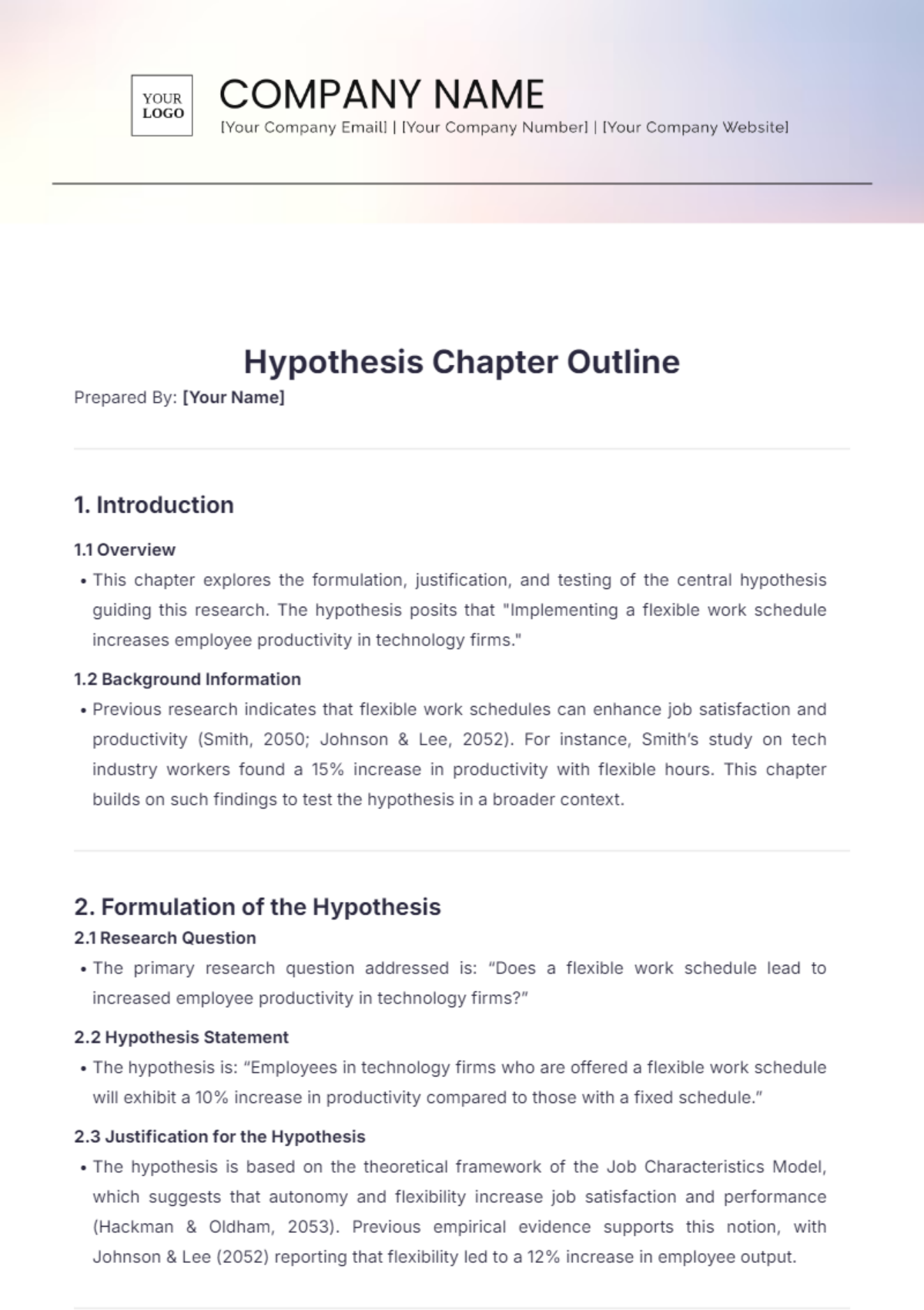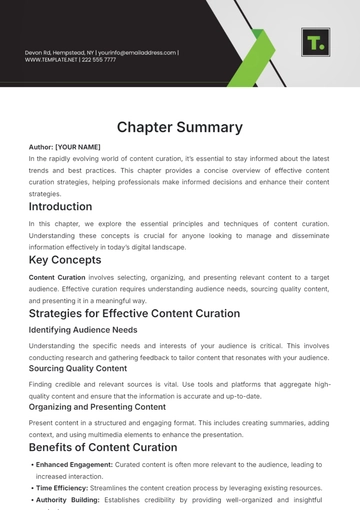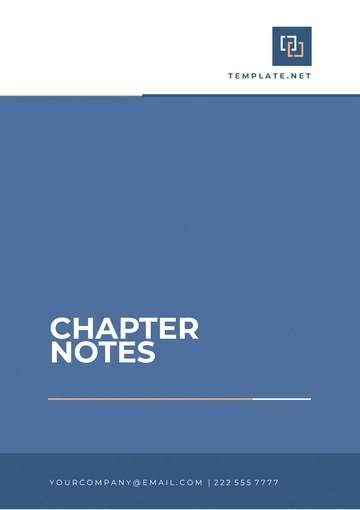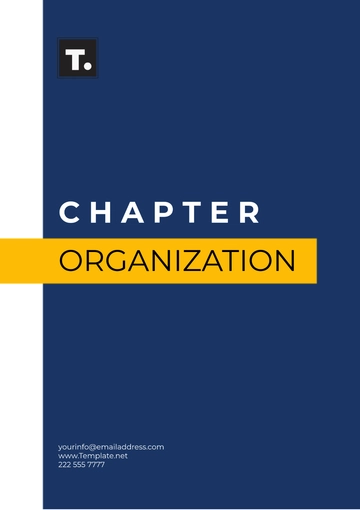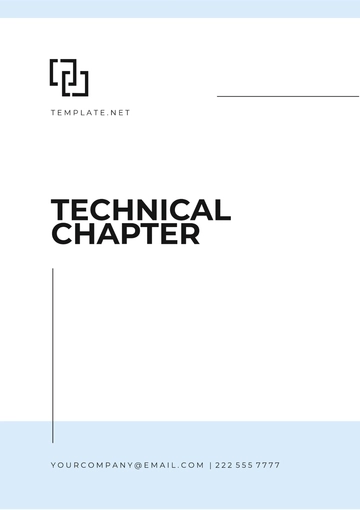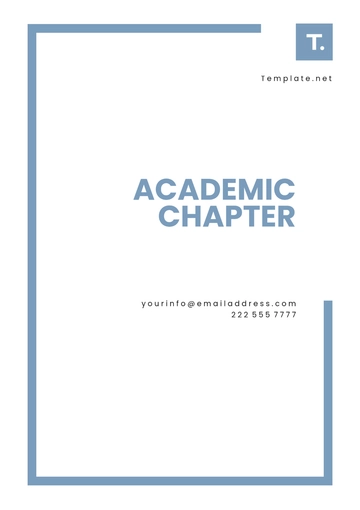Hypothesis Chapter Outline
Prepared By: [Your Name]
1. Introduction
1.1 Overview
This chapter explores the formulation, justification, and testing of the central hypothesis guiding this research. The hypothesis posits that "Implementing a flexible work schedule increases employee productivity in technology firms."
1.2 Background Information
Previous research indicates that flexible work schedules can enhance job satisfaction and productivity (Smith, 2050; Johnson & Lee, 2052). For instance, Smith’s study on tech industry workers found a 15% increase in productivity with flexible hours. This chapter builds on such findings to test the hypothesis in a broader context.
2. Formulation of the Hypothesis
2.1 Research Question
2.2 Hypothesis Statement
2.3 Justification for the Hypothesis
The hypothesis is based on the theoretical framework of the Job Characteristics Model, which suggests that autonomy and flexibility increase job satisfaction and performance (Hackman & Oldham, 2053). Previous empirical evidence supports this notion, with Johnson & Lee (2052) reporting that flexibility led to a 12% increase in employee output.
3. Theoretical Framework
3.1 Relevant Theories and Models
The Job Characteristics Model (Hackman & Oldham, 2057) will be used to frame this hypothesis. The model suggests that job enrichment, such as increased autonomy through flexible schedules, can lead to higher job performance.
3.2 Conceptual Definitions
Flexible Work Schedule: An arrangement allowing employees to set their work hours within agreed-upon limits (e.g., core hours from 10 AM to 3 PM).
Employee Productivity: Measured by output per hour of work, tracked through performance metrics and project completion rates.
4. Hypothesis Testing
4.1 Research Design
4.2 Data Collection Methods
4.3 Analysis Plan
5. Expected Outcomes
5.1 Anticipated Results
5.2 Implications of Results
6. Limitations and Assumptions
6.1 Study Limitations
Potential limitations include the short duration of the study and the specific industry focus, which may not generalize to other sectors. Additionally, unmeasured variables such as individual work habits could affect results.
6.2 Assumptions
It is assumed that all participants will adhere to their assigned work schedule and that performance metrics are consistently recorded. It is also assumed that external factors, such as market conditions, remain constant during the study period.
7. Summary
7.1 Recap of Hypothesis
This chapter detailed the hypothesis that flexible work schedules enhance employee productivity in technology firms. The theoretical basis, research design, and analysis plan were outlined to test this hypothesis.
7.2 Contribution to Research
8. References
Hackman, J. R., & Oldham, G. R. (2050). Motivation through the design of work: Test of a theory. Organizational Behavior and Human Performance.
Johnson, R., & Lee, M. (2051). The impact of flexible work arrangements on productivity in the tech industry. Journal of Business Research.
Smith, A. (2052). Flexible hours and employee performance: A case study. Technology Management Review.
Chapter Outline Templates @ Template.net
